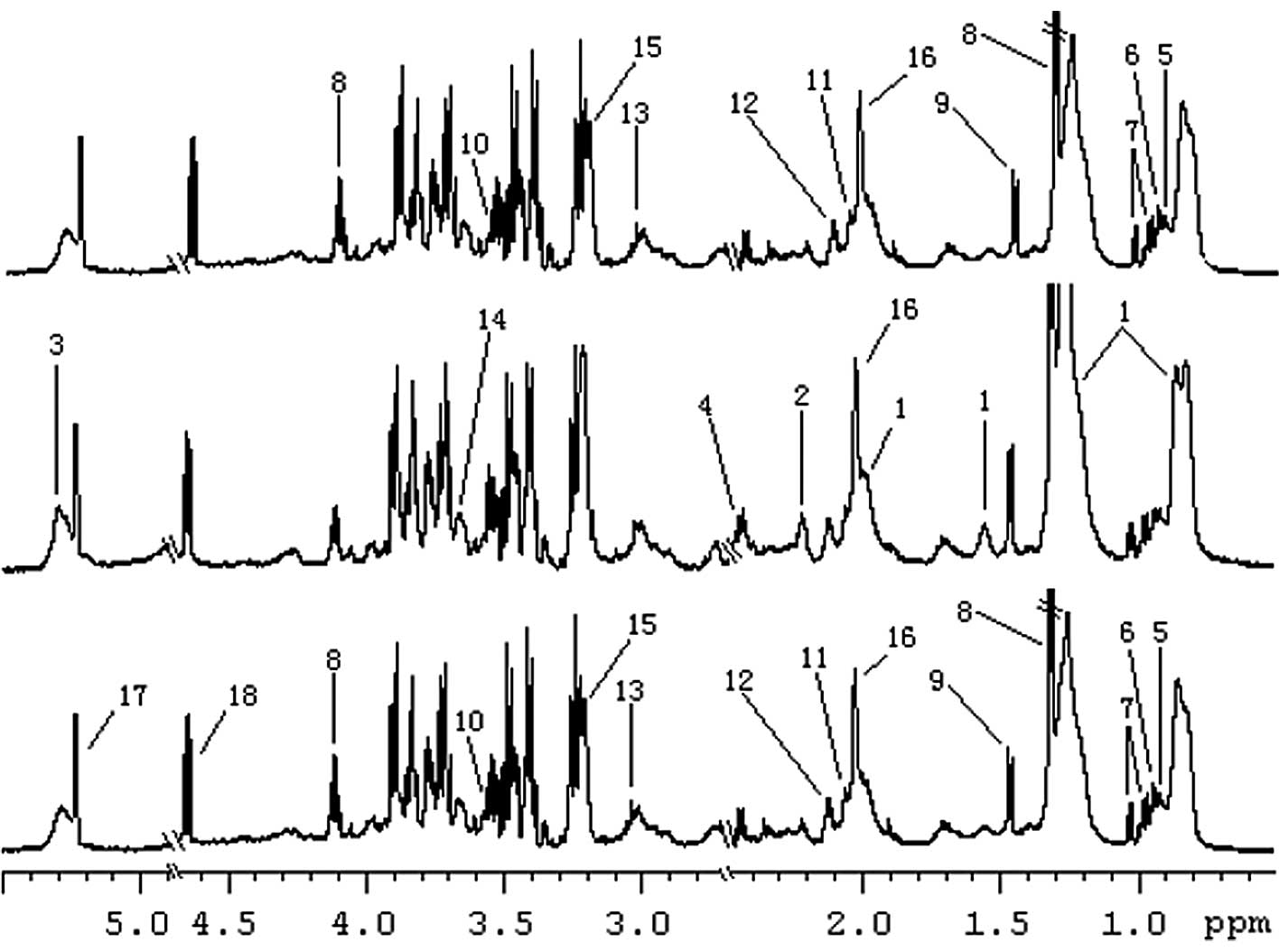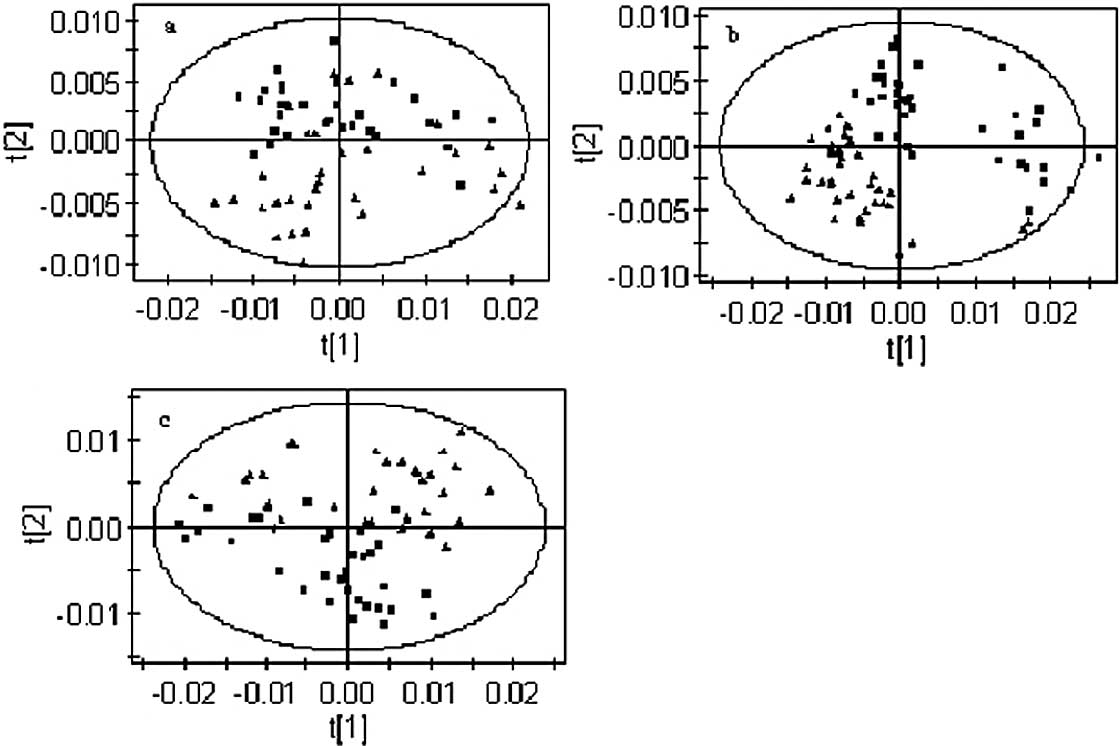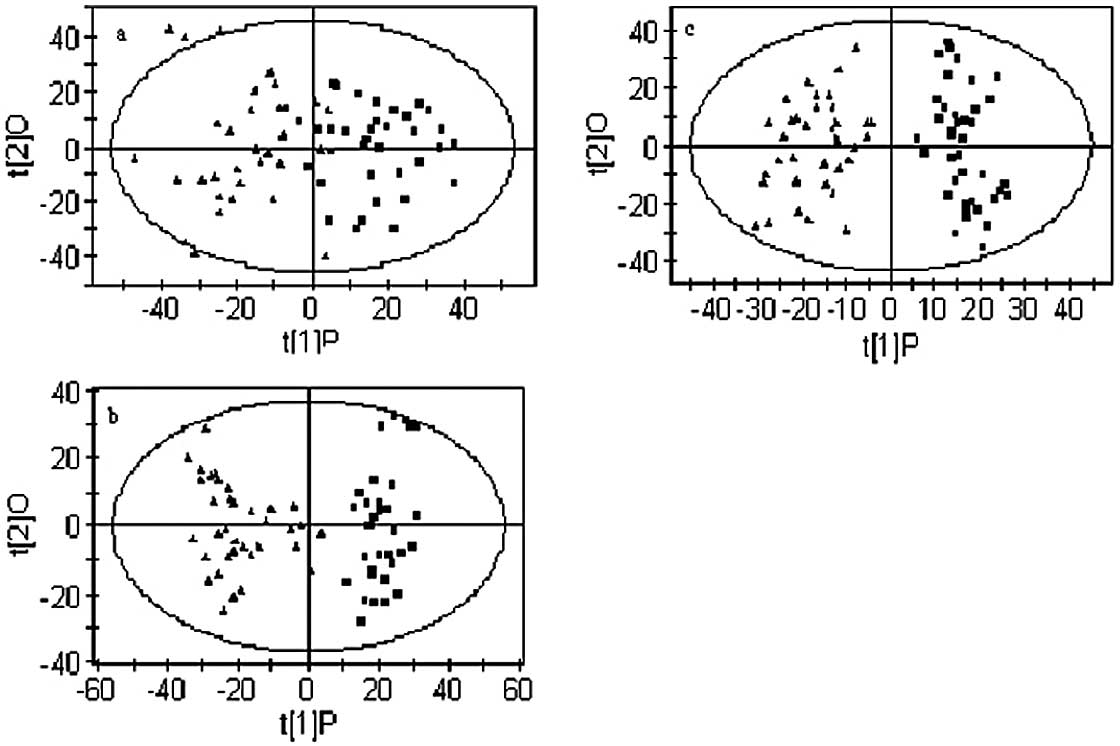|
1.
|
Parkin DM, Whelan SL, Ferlay J, Teppo L
and Thomas DB: Cancer Incidence in Five Continents. 8.
International Agency for Research on Cancer Scientific
Publications; Lyon: 2002
|
|
2.
|
Yang B, Bray F, Parkin D, Sellors J and
Zhang Z: Cervical cancer as a priority for prevention in different
world regions: an evaluation using years of life lost. Int J
Cancer. 109:418–424. 2004.PubMed/NCBI
|
|
3.
|
Suzuke Lalai, Peng YH, Zhou K, Fang X and
Wang L: Analysis of the cervical cancer distribution in Xinjiang. J
Xinjiang Med Univ. 29:569–571. 2006.(In Chinese).
|
|
4.
|
Ma D and Ling XI: Advances in the
epidemiology and etiology of cervical cancer. J Practical Obstet
Gynecol. 17:61–63. 2001.(In Chinese).
|
|
5.
|
Abulafia O, Pezzullo JC and Sherer DM:
Perfomance of Thinprep liquid-based cervical cytology in comparison
with conventionally prepared Papaniclaou smears: a quantitative
survey. Gynecol Oncol. 90:137–144. 2003. View Article : Google Scholar : PubMed/NCBI
|
|
6.
|
Monsonego J, Autillo-Touati A, Bergeron C,
Dachez R, Liaras J, Saurel J, Zerat L, Chatelain P and Mottot C:
Liquid-based cytology for primary cervical cancer screening: a
multi-centre study. Br J Cancer. 84:360–366. 2001. View Article : Google Scholar : PubMed/NCBI
|
|
7.
|
Waters NJ, Waterfield CJ, Farrant RD,
Holmes E and Nicholson JK: Integrated metabonomic analysis of
bromobenzene-induced novel hepatic 5-oxoprolinosis. J Proteome Res.
5:1448–1459. 2006. View Article : Google Scholar : PubMed/NCBI
|
|
8.
|
Nicholson JK, Foxall PJ, Spraul M, Farrant
RD and Lindon JC: 750 MHz 1H and 1H-13C NMR spectroscopy of human
blood plasma. Anal Chem. 67:793–811. 1995. View Article : Google Scholar : PubMed/NCBI
|
|
9.
|
Parvizi J: Metabolomics: key to
understanding human individuality. J Bone Joint Surg Am. 93:1–3.
2011.
|
|
10.
|
Odunsi K, Wollman RM, Ambrosone CB, Hutson
A, McCann SE, Tammela J, Geisler JP, Miller G, Sellers T, Cliby W,
et al: Detection of epithelial ovarian cancer using 1H-NMR-based
metabonomics. Int J Cancer. 113:782–788. 2005. View Article : Google Scholar : PubMed/NCBI
|
|
11.
|
Fossel ET, Carr JM and McDonagh J:
Detection of malignant tumors. Water suppressed proton nuclear
magnetic resonance spectroscopy of plasma. N Engl J Med.
315:1369–1376. 1986.PubMed/NCBI
|
|
12.
|
Carraro S, Rezzi S, Reniero F, Héberger K,
Giordano G, Zanconato S, Guillou C and Baraldi E: Metabolomics
applied to exhaled breath condensate in childhood asthma. Am J
Respir Crit Care Med. 175:986–990. 2007. View Article : Google Scholar : PubMed/NCBI
|
|
13.
|
Duarte IF, Goodfellow BJ, Barros A, Jones
JG, Barosa C, Diogo L, Garcia P and Gil AM: Metabolic
characterisation of plasma in juveniles with glycogen storage
disease type 1a (GSD1a) by high-resolution 1H NMR spectroscopy. NMR
Biomed. 20:401–412. 2007. View
Article : Google Scholar : PubMed/NCBI
|
|
14.
|
Bhawal UK, Ozaki Y, Nishimura M, Sugiyama
M, Sasahira T, Nomura Y, Sato F, Fujimoto K, Sasaki N, Ikeda MA, et
al: Association of expression of receptor for advanced glycation
end products and invasive activity of oral squamous cell carcinoma.
Oncology. 69:246–255. 2005. View Article : Google Scholar : PubMed/NCBI
|
|
15.
|
Lindon JC and Holcholson JK: Metabonomics
technologies and their applications in physiological monitoring,
drug safety assessment and disease diagnosis. Biomarkers. 9:1–31.
2004. View Article : Google Scholar : PubMed/NCBI
|
|
16.
|
Hollywood K, Brison DR and Goodace R:
Metabolomics: current technologies and future trends. Proteomics.
6:4716–4723. 2006. View Article : Google Scholar : PubMed/NCBI
|
|
17.
|
Ala-Korpela M: 1H-NMR spectroscopy of
human blood plasma. Prog Nucl Magn Reson Spectros. 27:475–484.
1995. View Article : Google Scholar
|
|
18.
|
Sitter B, Bathen T, Hagen B, Arentz C,
Skjeldestad FE and Gribbestad IS: Cervical cancer tissue
characterized by high-resolution magic angle spinning MR
spectroscopy. MAGMA. 16:174–181. 2004. View Article : Google Scholar : PubMed/NCBI
|
|
19.
|
Mahon MM, deSouza NM, Dina R, Soutter WP,
McIndoe GA, Williams AD and Cox IJ: Preinvasive and invasive
cervical cancer: an ex vivo proton magic angle spinning magnetic
resonance spectroscopy study. NMR Biomed. 17:144–153. 2004.
View Article : Google Scholar : PubMed/NCBI
|
|
20.
|
Lyng H, Sundfor K and Rofstad EK: Changes
in tumor oxygen tension during radiotherapy of uterine cervical
cancer: relationships to changes in vascular density, cell density,
and frequency of mitosis and apoptosis. Int J Radiat Oncol Biol
Phys. 46:935–946. 2000. View Article : Google Scholar : PubMed/NCBI
|
|
21.
|
Walenta S, Wetterling M, Lehrke M,
Schwickert G, Sundfør K, Rofstad EK and Mueller-Klieser W: High
lactate levels predict likelihood of metastases, tumor recurrence,
and restricted patient survival in human cervical cancers. Cancer
Res. 60:916–921. 2000.PubMed/NCBI
|
|
22.
|
Woo HM, Kim KM, Choi MH, Jung BH, Lee J,
Kong G, Nam SJ, Kim S, Bai SW and Chung BC: Mass spectrometry based
metabolomic approaches in urinary biomarker study of women's
cancers. Clinica Chimica Acta. 400:63–69. 2009.PubMed/NCBI
|
|
23.
|
Coen M, Lenz EM, Nicholson JK, Wilson ID,
Pognan F and Lindon JC: An integrated metabonomic investigation of
acetaminophen toxicity in the mouse using NMR spectroscopy. Chem
Res Toxicol. 16:295–303. 2003. View Article : Google Scholar : PubMed/NCBI
|
|
24.
|
Smilde AK, Jansen JJ, Hoefsloot HC, Lamers
RJ, van der Greef J and Timmerman ME: ANOVA-simultaneous component
analysis (ASCA): a new tool for analyzing designed metabolomics
data. J Bio Informatics. 21:3043–3048. 2005.PubMed/NCBI
|
|
25.
|
Nicholson JK, Connelly J, Lindon JC and
Holmes E: Metabonomics: a platform for studying drug toxicity and
gene function. Nat Rev Drug Discov. 1:153–161. 2002. View Article : Google Scholar : PubMed/NCBI
|
|
26.
|
Holmes E and Antti H: Chemometric
contributions to the evolution of metabonomics: mathematical
solutions to characterizing and interpreting complex biological NMR
spectra. Analyst. 127:1549–1557. 2002. View
Article : Google Scholar : PubMed/NCBI
|
|
27.
|
Viant MR: Improved methods for the
acquisition and interpretation of NMR metabolomic data. BMC
Bioinformatics. 310:943–948. 2003.PubMed/NCBI
|
|
28.
|
Fan W: Metabolite profiling by one-and
two-dimensional NMR analysis of complex mixtures. Prog NMR
Spectrosc. 28:161–219. 1996. View Article : Google Scholar
|
|
29.
|
Airu Zhou and Xiliang Zha: Biology [M].
People Health Publishing House; Beijing: 2004
|
|
30.
|
Morvan D and Demidem A: Metabolomics by
proton nuclear magnetic resonance spectroscopy of the response to
chloroethylnitrosourea reveals drug efficacy and tumor adaptive
metabolic pathways. Cancer Res. 67:2150–2159. 2007. View Article : Google Scholar
|
|
31.
|
Tiziani S, Lopes V and Günther UL: Early
stage diagnosis of oral cancer using 1H NMR-based metabolomics.
Neoplasia. 11:269–276. 2009.PubMed/NCBI
|
|
32.
|
Garber K: Energy boost: the Warburg effect
returns in a new theory of cancer. J Natl Cancer Inst.
96:1805–1806. 2004. View Article : Google Scholar : PubMed/NCBI
|
|
33.
|
Goodacre R, Vaidyanathan S, Dunn WB,
Harrigan GG and Kell DB: Metabolomics by numbers: Acquiring and
understanding global metabolite data. Trends Biotechnol.
22:245–252. 2004. View Article : Google Scholar : PubMed/NCBI
|
|
34.
|
Walenta S and Mueller-Klieser WF: Lactate:
mirror and motor of tumor malignancy. Semin Radiat Oncol.
14:267–274. 2004. View Article : Google Scholar : PubMed/NCBI
|
|
35.
|
Miller BL: A review of chemical issues in
H NMR spectroscopy: N-acetyl-L-aspartate, creatine and choline. NMR
Biomed. 4:47–52. 1991. View Article : Google Scholar : PubMed/NCBI
|
|
36.
|
Foster DA and Xu L: Phospholipase D in
cell proliferation and cancer. Mol Cancer Res. 1:789–800.
2003.PubMed/NCBI
|
|
37.
|
Ackerstaff E, Glunde K and Bhujwalla ZM:
Choline phospholipid metabolism: A target in cancer cells. J Cell
Biochem. 90:525–533. 2003. View Article : Google Scholar : PubMed/NCBI
|
|
38.
|
Kubota A, Meguid MM and Hitch DC:
Amino-acid profiles correlate diagnostically with organ site in 3
kinds of malignant tumors. Cancer. 69:2343–2348. 1992. View Article : Google Scholar : PubMed/NCBI
|

















